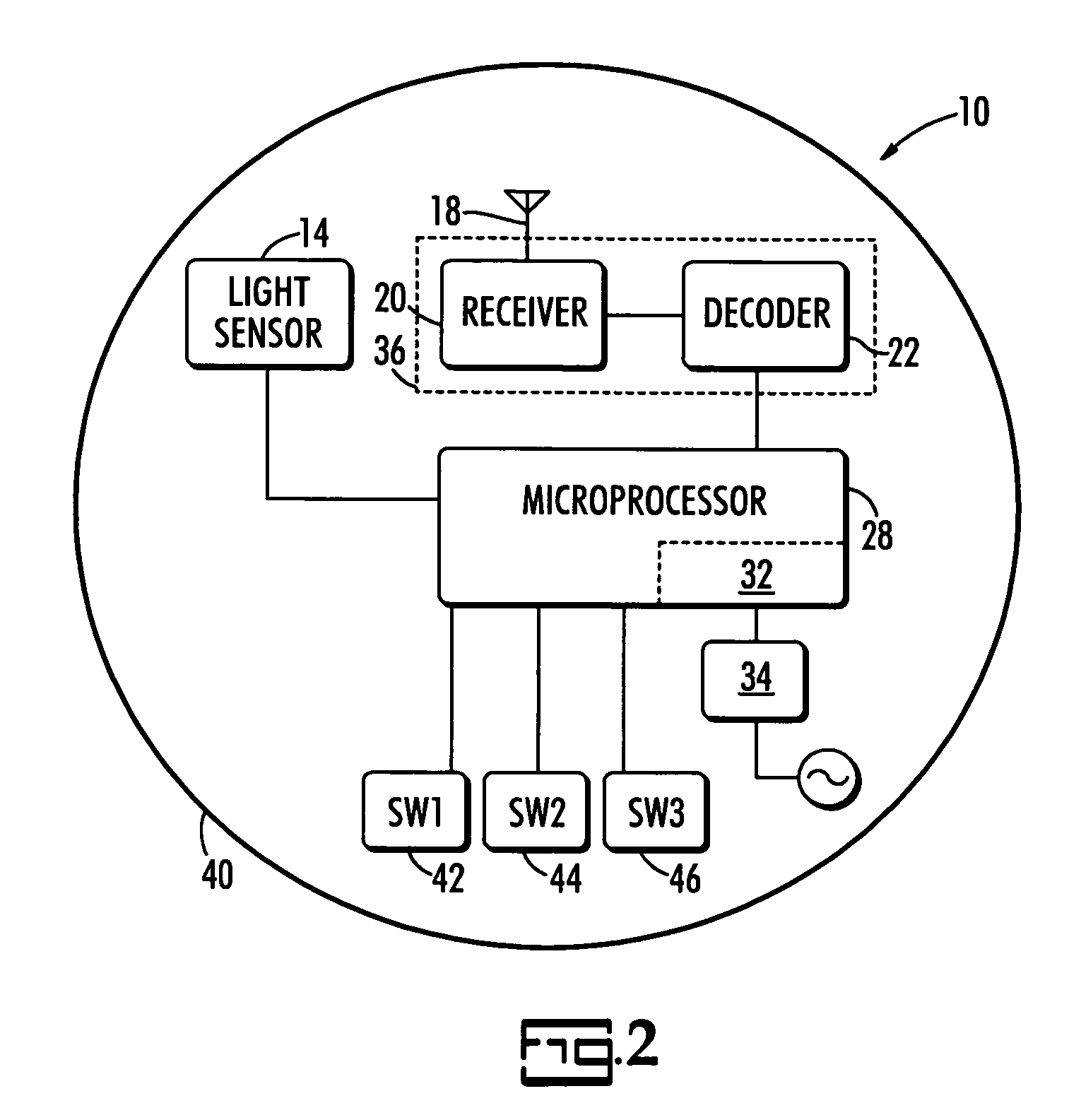Photocontrol with radio-controlled timer and a decoder
a radio-controlled timer and photocontrol technology, applied in the field of photocontrols, can solve the problems of photocontrol with a built-in clock, requiring manual setting of the clock, and neither method can turn off the lighting at a specific tim
- Summary
- Abstract
- Description
- Claims
- Application Information
AI Technical Summary
Benefits of technology
Problems solved by technology
Method used
Image
Examples
Embodiment Construction
[0020]The present invention is a photocontrol with a radio-controlled timer. In addition to a light sensor that is used to activate an electrical load such as lighting at dusk and to deactivate it at dawn, the present photocontrol can be set to turn the lighting off at night at a particular time selected by the user and, optionally, to turn it on again at a particular time before dawn.
[0021]For example, if a business operates on extended hours, such as a convenience store does, the present photocontrol can turn on the business signage, security lighting and area lighting at dusk, turn it off when the business closes later that night, turn it back on when the business resumes operation early the next morning, and then off again at dawn. The light sensor of the photocontrol turns the light on at dusk and off at dawn based on ambient lighting, but the radio-controlled timer turns the light off at the close of the business day and on at the start of the next business day, unless the lig...
PUM
 Login to View More
Login to View More Abstract
Description
Claims
Application Information
 Login to View More
Login to View More - R&D
- Intellectual Property
- Life Sciences
- Materials
- Tech Scout
- Unparalleled Data Quality
- Higher Quality Content
- 60% Fewer Hallucinations
Browse by: Latest US Patents, China's latest patents, Technical Efficacy Thesaurus, Application Domain, Technology Topic, Popular Technical Reports.
© 2025 PatSnap. All rights reserved.Legal|Privacy policy|Modern Slavery Act Transparency Statement|Sitemap|About US| Contact US: help@patsnap.com



